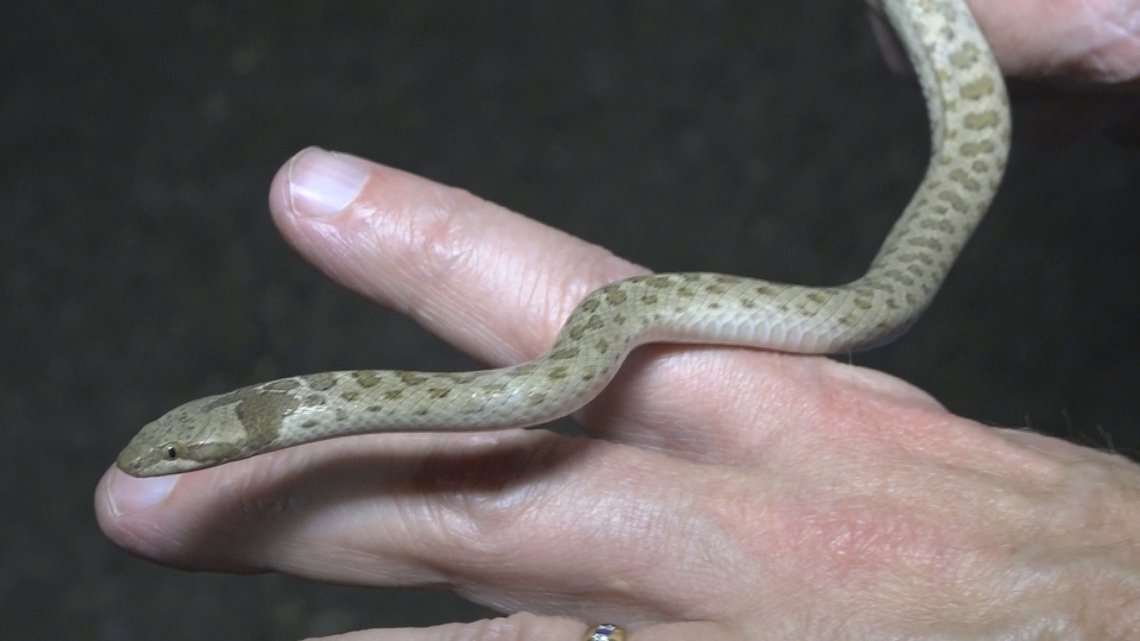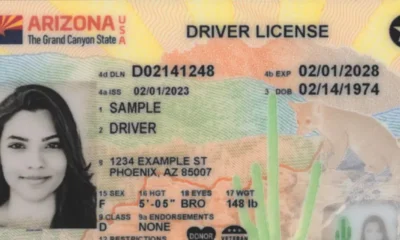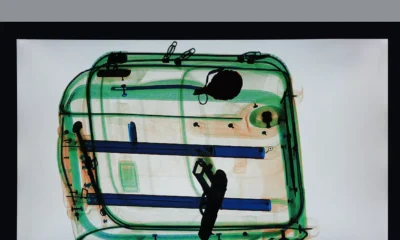animals
Psssssst… Discover Safe Techniques to Spot Snakes in Arizona

Jaren Martineau and his friends have an unusual hobby: searching for nocturnal creatures that often feature in nightmares.
GILA COUNTY, Ariz. — Underneath the setting sun at 7:34 p.m. on a Saturday, our journey begins at a concealed location in Gila County. It’s a remote dirt parking lot encircled by rocky hills.
Martineau guards the secrecy of this path to prevent it from being ravaged by crowds or reptile poachers.
Martineau’s companions, including his childhood friend Jason Tenney, are dressed casually — an odd choice for a night’s adventure in search of elusive creatures.
We pile into Tenney’s truck and drive slowly as dusk turns into night.
We are on the hunt for creatures that many dread.
“We are herping right now,” Tenney explains.
Nighttime is prime for spotting snakes and spiders in Arizona; Martineau and his friends call themselves “herpers” and indulge in “herping” whenever conditions are favorable.
Herping involves searching for reptiles and amphibians.
By day, Martineau is a lawyer, but his passion for herping started in childhood with lizard catching.
“As I got older, I wanted more than just lizards; I wanted snakes, but my mom wouldn’t allow it,” he recalls.
At 18, armed with a car and freedom, Martineau delved into reptile guidebooks, identifying ideal conditions and locations for spotting snakes.
“During the summer monsoon, nighttime is optimal for finding most reptiles and amphibians,” Martineau notes.
On this particular night, a baby Mohave rattlesnake appears as our first find.
“This time of year is when babies are born,” Martineau says while maneuvering his snake hook, carefully guiding the rattlesnake off the road.
Martineau refers to roadkill snakes as DORs, or “dead on the roadway.”
Dead snakes yield no points in his Facebook group’s annual monsoon herping challenge.
The group “ARIZONA Reptiles and Amphibians – Herping, Community, Observations” has grown to 2,600 members, offering a platform for newbies and experts to share findings.
Martineau also runs “Sonoran Herping Adventures” on YouTube, where he provides insights into successful herping trips.
That Saturday night was indeed fruitful.
Less than a mile from the baby rattlesnake, a Sonoran gopher snake was lying in the middle of the road.
Headlights approach, and Tenney quickly picks up the non-venomous snake to avoid it getting hit.
The driver wonders what we’re doing. “Everything alright?” he asks. “Yep, thank you,” Martineau responds.
The Sonoran gopher snake, roughly 2 feet long, thrives on a diet of rodents.
The second gopher snake found later had a healing wound. We offered it water, but it quickly slithered away into the brush.
Snakes prefer to escape rather than confront humans. “They’re not looking to chase you,” Martineau explains. “They’ll either remain motionless or flee.”
As we continue, Tenney slams on the brakes again. “That’s a banded gecko or something out your door,” he says.
We missed it.
Further up the road, a false alarm turn out to be a stick. However, we soon encounter a venomous Arizona black rattlesnake.
Martineau treats this dangerous snake with the utmost respect.
“It’s one of the more beautiful rattlesnakes we have,” he comments.
In total, we found five rattlesnake species, two Sonoran gopher snakes, a Sonoran desert toad, two skunks, a coyote pup, and a tarantula. Not all are herps, but fascinating nonetheless.
Herping is an affordable hobby but demands the right conditions. Martineau advises finding low-traffic roads through desert habitats.
Spring and monsoon seasons offer the best opportunities, especially between 75 to 85 degrees. High elevations may be necessary.
Nighttime herping is best when there’s no moon, as moonlight makes herps vulnerable to predators.
It’s crucial to drive slowly and ensure cruising is legal.
Safety is paramount. “Make sure you have a good, bright flashlight,” Martineau advises. “Watch where you put your hands and feet.”
Particularly if you’re wearing flip flops.


















